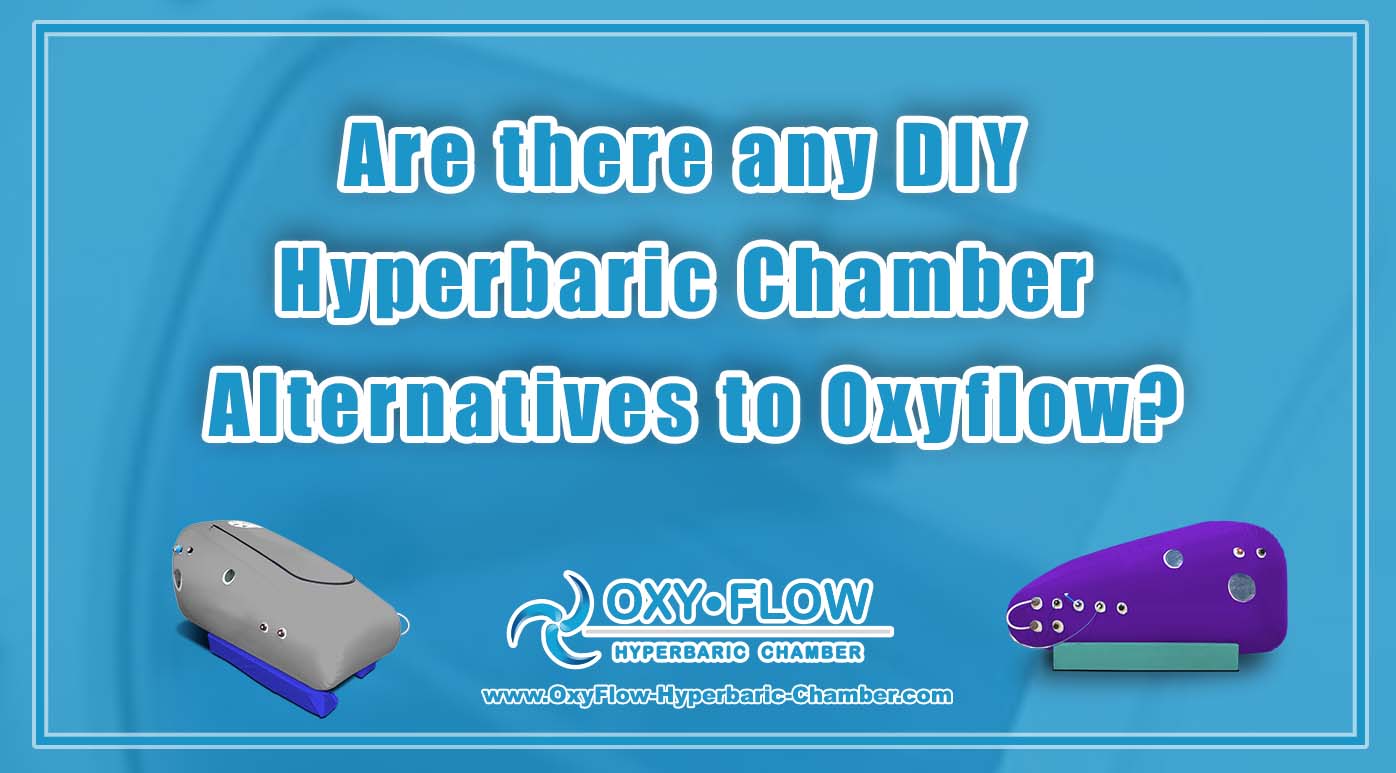Menu
Are there any DIY Hyperbaric Chamber Alternatives to Oxyflow?
Are there any DIY Hyperbaric Chamber Alternatives to Oxyflow?

Hyperbaric Chamber oxygen therapy (HBOT) is a medical treatment that involves breathing pure oxygen in a pressurized environment. It has been used for years to treat various conditions, including decompression sickness, carbon monoxide poisoning, and non-healing wounds. Traditionally, hyperbaric chambers have been found in hospitals and specialized clinics, but recently, portable home hyperbaric chambers have gained popularity. Oxyflow is one such brand that offers these chambers, but are there any alternatives for those looking for a do-it-yourself (DIY) approach?
Understanding Hyperbaric Chambers.
Before delving into alternatives, it’s essential to understand the basic concept of a hyperbaric chamber. These chambers are designed to create a pressurized environment where the oxygen concentration is higher than atmospheric levels. The increased pressure allows the oxygen to dissolve more effectively into the bloodstream, promoting healing and recovery.
Oxyflow: A Popular Choice.
Oxyflow is a well-known brand that manufactures portable hyperbaric chambers for home use. Their chambers are easy to set up, affordable, and have gained positive reviews from users. However, some individuals may prefer a DIY approach due to various reasons, such as cost constraints or the desire for a customized solution.
DIY Hyperbaric Chamber Alternatives.
While creating a fully functional hyperbaric chamber at home may not be feasible for most people, there are a few alternatives worth exploring:
Mild Hyperbaric Oxygen Therapy Bags.
Mild Hyperbaric Oxygen Therapy (mHBOT) bags are a popular alternative to traditional hyperbaric chambers. These bags are made of durable material and can be pressurized using an electric air compressor. While they do not offer the same level of pressure as medical-grade chambers, they still provide a mild pressurized environment that can enhance oxygen absorption. Companies like Newtowne Hyperbarics and Summit to Sea offer mHBOT bags that are easy to set up and use at home.
Hyperbaric Oxygen Hoods.
For those seeking a targeted approach, hyperbaric oxygen hoods can be a viable option. These hoods cover the head and neck, creating a pressurized environment specifically for those areas. While not providing full-body treatment, they can be useful for conditions like traumatic brain injuries or facial wounds. Companies like Hyperbaric Options provide hyperbaric oxygen hoods that can be used with a home air compressor.
Oxygen Concentrators.
Another alternative to consider is using an oxygen concentrator. While it cannot create a pressurized environment, it can supply a higher concentration of oxygen. Oxygen concentrators work by separating oxygen from room air and delivering it through a nasal cannula or face mask. Although it does not provide the same level of benefits as hyperbaric chambers, it can still be a useful tool for oxygen therapy.
Important Considerations.
While DIY hyperbaric chamber alternatives may seem appealing, it’s crucial to consider a few important factors:
- Safety: DIY solutions may not come with the same safety features as professional-grade chambers. It’s essential to follow instructions carefully and consult with a healthcare professional before attempting any DIY hyperbaric therapy.
- Efficacy: DIY alternatives may not provide the same level of therapeutic benefits as medical-grade chambers. They may be suitable for mild conditions or as complementary therapy, but severe or complex conditions may require professional treatment.
- Cost: DIY alternatives may be more cost-effective initially, but long-term costs should also be considered. Professional-grade hyperbaric chambers are designed to withstand rigorous use, while DIY alternatives may require more frequent replacement or maintenance.
Conclusion.
While Oxyflow and similar brands offer portable hyperbaric chambers for home use, there are DIY alternatives available for those seeking a customized approach. Mild Hyperbaric Oxygen Therapy bags, hyperbaric oxygen hoods, and oxygen concentrators are some options worth exploring. However, it’s important to understand the limitations and consult with healthcare professionals before embarking on any DIY hyperbaric therapy. Safety, efficacy, and long-term cost considerations should always be prioritized to ensure optimal treatment outcomes.
Ready for Hyperbaric Oxygen Chamber?
stay up to date with the latest news
